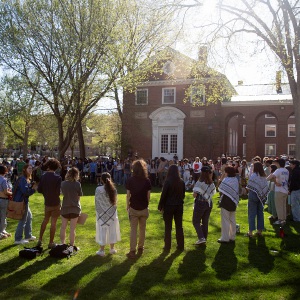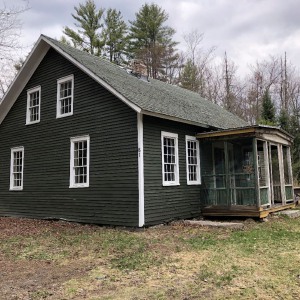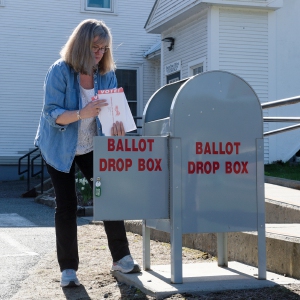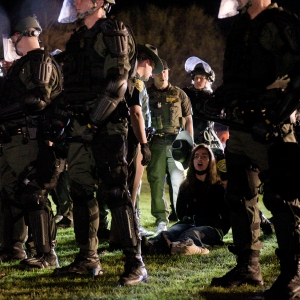A Yankee Notebook: The second midwinter heralds the return of the light

Willem Lange. Copyright (c) Valley News. May not be reprinted or used online without permission. Send requests to permission@vnews.com.
| Published: 02-06-2024 9:01 PM |
Our culture is pretty thoroughly saddled with rituals and celebrations that originated in our distant, non-scientific past, when we considered phenomena the result of supernatural intervention. I guess maybe these rites seem cute or quirky, and are thus charming. So we continue to observe them.
Midsummer Day, for example. I once took a look at my schedule for a year and saw that on that portentous day I was going to be in the Lofoten Islands, off the coast of Norway north of the Arctic Circle. Steeped in Norse myths, I knew that Norwegians of the high latitudes celebrated midsummer night (which doesn’t occur; it stays light) by scarfing down salt herring, glugging gallons of mead, and dancing au naturel around great bonfires.
This sounded like just my kind of excitement; so after supper that June evening I wandered out onto the rocks along the shore. Sure enough, I spotted the smoke of a fire in the distance. I hurried that way and, arriving at the scene, saw that it was caused by two or three families with small children, picnicking on the rocks and burning their trash. A sputtering Formica-topped kitchen table gave off an especially noxious cloud. I retreated, crestfallen. So much for mythic traditions.
Midwinter has fared much better. That’s likely because the apparent death of the sun (not to mention the nonstop shivering) created more collective anxiety than did sun-filled skies. Thus the dozens of midwinter observances, from Meán Geimhrid (Celtic) to Saturnalia (Roman) to Christmas (Christian) to others that crowd the calendar during the winter solstice. It’s no wonder “Happy Holidays” is becoming au courant.
There are, however, two midwinters. The first looks hopefully skyward for the return of the sun; the second, which we’ve just recognized in several lower-key ways, looks hopefully toward spring, mud season, planting of crops, and ice-out.
Near Punxsutawney, Pa., resides a semi-domesticated groundhog (Marmota monax) who’s dragged half-asleep from his den each Feb. 2 by a top-hatted local (Homo sapiens) and displayed to the waiting paparazzi. Purported to possess oracular powers, Phil, as he’s been dubbed, predicts whether more or less winter is yet ahead of us. Briefly, if the sun is shining, he sees his shadow, predicts more, and retreats to his den for six more weeks. If the day is cloudy, he fails to see his shadow, predicts that winter is all but over, and retreats to his den for six more weeks.
What we call Groundhog Day is much more than that, however. Though the 21st of December marks the darkest time of the year and late January the coldest (the thermometer follows the sun by about six weeks, winter and summer), Feb. 2 is the middle of meteorological winter; which is to say that the temperature, which has thus far, since late July, been trending downward, is now reversing and trending upward. As the old-timers (and new-timers who wish to appear Vermont-savvy) often say, “Half your wood and half your hay should still be left on Candlemas Day.”
Which brings up yet another decoration that’s been hung on the overworked Second of February. The day has for centuries been the date of the annual blessing of the candles designated for use in the coming church year. I’ve never been able to get too excited over that one. But it’s 40 days after Christmas, as well, which makes it the Feast of the Presentation of the infant Jesus in the temple, as required by ecclesiastical law.
Article continues after...
Yesterday's Most Read Articles
 Dartmouth administration faces fierce criticism over protest arrests
Dartmouth administration faces fierce criticism over protest arrests
 Hanover house added to New Hampshire Register of Historic Places
Hanover house added to New Hampshire Register of Historic Places
 Sharon voters turn back proposal to renovate school
Sharon voters turn back proposal to renovate school
But hold on! There’s more. It’s also what I call the Day of St. Simeon’s Checkout. Simeon, a very old man, believed he would be allowed to die when he had seen the Messiah. Feb. 2 was his day. As it was for the prophetess Anna, who also spotted the infant that day. So it’s also called the Feast of the Encounter. And, given Jewish law, the Feast of the Purification of Mary.
Poor Feb. 2 is a Christmas tree overloaded with decorations.
Let’s just call it the Celebration of the Returning Sun. Hallelujah!

 Editorial: Response to campus protests only adds fuel to the fire
Editorial: Response to campus protests only adds fuel to the fire Editorial: Chris Sununu’s moral vacuum
Editorial: Chris Sununu’s moral vacuum Editorial: Gambling tarnishes America’s sporting life
Editorial: Gambling tarnishes America’s sporting life By the Way: A white nationalist’s many mistruths
By the Way: A white nationalist’s many mistruths
